Doepfer A-106 Handleiding
Doepfer
Niet gecategoriseerd
A-106
Bekijk gratis de handleiding van Doepfer A-106 (12 pagina’s), behorend tot de categorie Niet gecategoriseerd. Deze gids werd als nuttig beoordeeld door 42 mensen en kreeg gemiddeld 4.9 sterren uit 21.5 reviews. Heb je een vraag over Doepfer A-106 of wil je andere gebruikers van dit product iets vragen? Stel een vraag
Pagina 1/12

DOEPFERDOEPFERDOEPFERDOEPFER System A-100 X-treme Filter A-106-1
1
Fig. 1: A-106-1 Controls and In/Outputs
1. Introduction
Module A-106-1 is an unique low/high pass filter and has it's
origin in our experiments to built a MS20 filter clone. In
contrast to other filter designs it has different audio inputs
for low and high pass, but only one audio output. The type
of filter (12dB low pass, 6dB high pass or any mix) is
defined by the shares of the audio signal fed to the
corresponding inputs. Even two different audio signals can
be used as low and high pass input. A special feature is the
polarizer at the high pass input that allows to add/subtract
the high pass to/from the low pass share, leading to pseudo
band pass and notch responses (details concerning pseudo
in the next chapter).
Another special feature are the clipping controls, which
allow independent adjustment of the positive and negative
clipping level. The resonance goes up to self-oscillation, but
with a clearly different behaviour than on other filters. At
certain resonance and clipping settings the self-oscillation
generates rectangle or short sawtooth shaped pulses.
In general the A-106-1 is a very strange and awesome filter
and far away from being perfect (e.g non-linear control
scale, self-oscillation with all sorts of waveforms except
sine, a lot of roaring, rattling, noise or other unpredictable
sounds at high distortion and resonance settings, high
distortion or audio level overrides the resonance, significant
CV feedthrough …). But the A-106-1 has a lot of character –
probably much more than any other filter of the A-100 – and
is able to generate filter sweeps which are not possible with
any other filter.

X-treme Filter A-106-1 System A-100 DOEPFERDOEPFERDOEPFERDOEPFER
2
2. Basic Principles
As mentioned in the introduction, module A-106-1 has it's
origin in our experiments to built a MS20 filter clone. The
famous original MS20 included two filters: a 12 dB low pass
and a 6dB high pass filter connected in series, both with a
very special design.
Remark: The MS20 high pass if very often described as
12dB high pass, but this is not true.
During our research we found a way to use the same circuit
simultaneously as low pass and high pass for 2 different
audio signals (a bit similar to the A-101-1 Steiner Vactrol
filter, which also has different audio inputs available, but
with the special MS20 circuit). For this two separate audio
inputs for low pass (LP) and high pass (HP) with separate
level controls are available. The sockets are normalled, i.e.
the signal applied to the LP input is available for the HP
input too, provided that no plug is inserted into the HP input
socket. The level control of the HP input is realized as a
polarizer. This means that the signal can be added with the
same polarity (+ range) or opposite polarity (- range)
compared to the LP input. This feature enables pseudo
notch (+) and pseudo band pass (-) filter functions too. From
our point of view this is the most flexible solution as it
enables these functions:
• Low pass: the audio signal is fed to the LP input, HP
level control is set to zero, LP level control is set to the
desired level
• High pass: the audio signal is fed to the LP or HP input,
LP level control is set to zero, HP level control is set to
the desired level (in this special case it does not matter
if positive or negative amplification is chosen with the
polarizer control)
• Low pass / high pass mix with one audio signal: the
audio signal is fed to the LP input, LP and HP level
controls are set to the desired levels.
o special setting 1: if the level controls for LP and HP
are set in a way that both levels are identical with
the same polarity (i.e. + range of the HP level
control) and no or little distortion only one obtains a
pseudo notch filter (pseudo means that the notch is
far away from being perfect, the attenuation in the
pass band is not as good as for other filters of the
A-100 system, please refer to the frequency
response curves for details)
o special setting 2: if the level controls for LP and HP
are set in a way that both levels are identical with
the opposite polarity (i.e. - range of the HP level
control) and no or little distortion only, one obtains a
pseudo pseudo band pass filter ( means that even
the band pass is far away from being perfect, there
is a significant feedthrough of frequencies below
and above the center frequency, please refer to the
frequency response curves for details)

DOEPFERDOEPFERDOEPFERDOEPFER System A-100 X-treme Filter A-106-1
3
o Remark for settings 1 and 2: The original MS20
circuit was not planned for notch or band pass
applications. The pseudo notch and pseudo band
pass filters should be treated as a free bonus and
have the disadvantages mentioned above. The
reason is that the low pass has a 12dB/octave
slope and the high pass has 6dB/octave. This leads
to phase relations that do not allow a "perfect" band
pass and notch simply by adding/subtracting
signals as for other filter designs (for insiders: there
remains always a 90 degree phase shift). For better
notches and band passes other A-100 filters should
be used - or two A-106-1 patched in series (band
pass) or parallel (notch) with suitable frequency
settings.
• Low pass and high pass with two different audio
signals: the two audio signals are fed to the LP input
resp. HP input and the level controls for LP and HP are
set to the desired levels. For the +/- control of the HP
input it is essential in this case if the two input signals
are phase correlated (e.g. two different outputs of the
same VCO or VCO output and a frequency divided
signal derived from this VCO) or if there is no fixed
phase correlation between the two signals (e.g. two
different VCOs). In the first case the - and + range of
the HP control leads to different filter results. In the
second case there is no difference, if the + or - range of
the HP control is used.
This design allows even some very special functions: It is
e.g. possible to adjust the controls so that the LP signal
does not distort, but the HP share does (or the other way
round) - alternatively with the same or opposite polarity
compared to the LP signal. For this the LP level has to be
set to a small value so that the signal does not distort. The
HP level control has to be set to a higher value (in the + or -
range) so that the HP share will distort.
The variety of controls allows a lot of functions which are not
available for any other filter we know.
Product specificaties
| Merk: | Doepfer |
| Categorie: | Niet gecategoriseerd |
| Model: | A-106 |
Heb je hulp nodig?
Als je hulp nodig hebt met Doepfer A-106 stel dan hieronder een vraag en andere gebruikers zullen je antwoorden
Handleiding Niet gecategoriseerd Doepfer

31 Maart 2024

8 Juli 2023

6 Juli 2023

4 Juli 2023

3 Juli 2023

3 Juli 2023

2 Juli 2023

2 Juli 2023

30 Juni 2023

30 Juni 2023
Handleiding Niet gecategoriseerd
- Barkan
- Digiquest
- TVLogic
- J. Rockett Audio Designs
- Jack Wolfskin
- Tesy
- Zapf
- Atdec
- Twisted Electrons
- Burley
- AMERRY
- Epson
- Testo
- Enduro
- Budda
Nieuwste handleidingen voor Niet gecategoriseerd
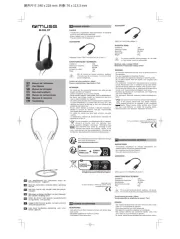
2 Augustus 2025
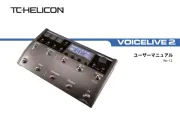
2 Augustus 2025
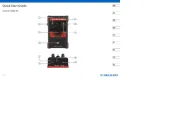
2 Augustus 2025

2 Augustus 2025
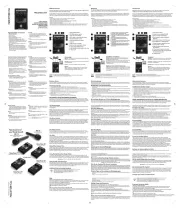
2 Augustus 2025
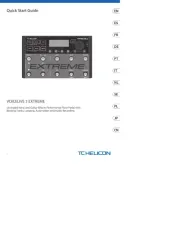
2 Augustus 2025

2 Augustus 2025
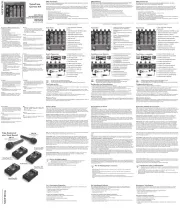
2 Augustus 2025
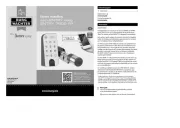
2 Augustus 2025

2 Augustus 2025